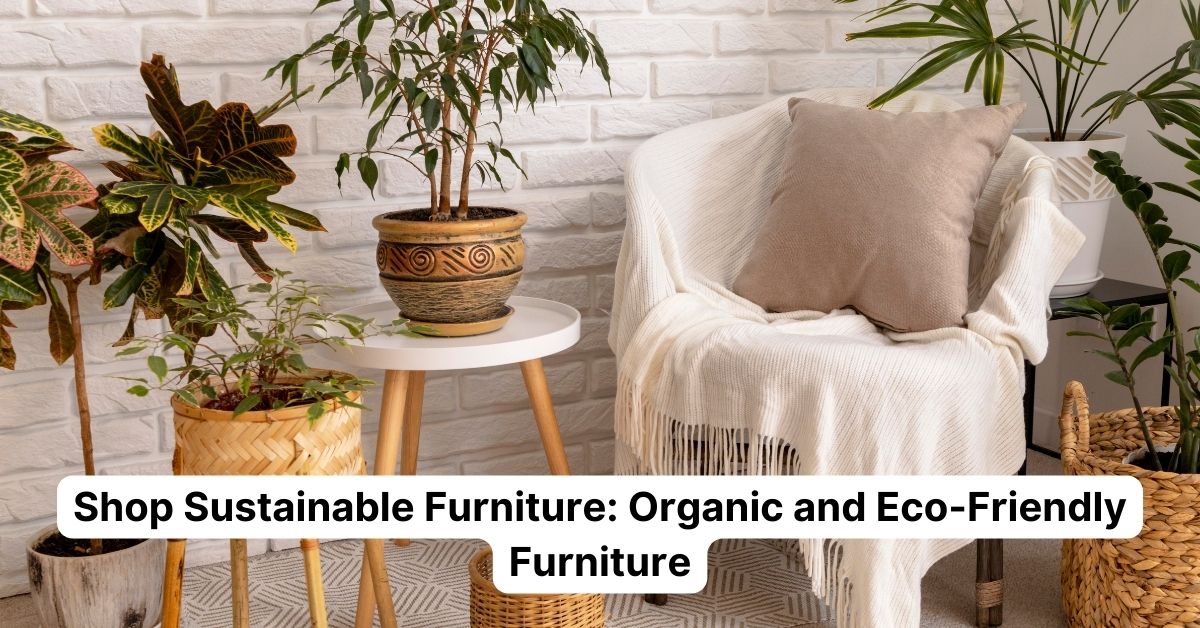Uncategorized
The Rise of Sustainable and Eco-Friendly Furniture: Why It Matters and What to Look for When Shopping
The furniture industry has been experiencing a shift towards sustainability and eco-friendly over the past few years. With consumers becoming more environmentally conscious, sustainable furniture has become a popular choice for people who want to reduce their carbon footprint and live a greener lifestyle. In this blog post, we will explore the rise of sustainable and eco-friendly furniture, why it matters, and what to look for when shopping for environmentally friendly furniture.
What is Sustainable Furniture?
Sustainable furniture refers to furniture that has been produced using eco-friendly materials, sustainable manufacturing processes, and ethical labor practices. It is designed to have a minimal impact on the environment and reduce waste, pollution, and greenhouse gas emissions. It is made from materials that are renewable, recycled, or repurposed and is often produced locally to reduce transportation emissions.
Why Does Sustainable Furniture Matter?
The production and disposal of furniture have a significant impact on the environment. The furniture industry is responsible for a large amount of deforestation, waste, and pollution. Traditional furniture is often made from materials that are not eco-friendly, such as plastics, synthetic fabrics, and toxic chemicals. These materials have a negative impact on the environment and can be harmful to human health.
It is also important because it reduces the negative impact that furniture production and disposal have on the environment. By choosing sustainable furniture, you are reducing your carbon footprint, supporting ethical labor practices, and promoting the use of eco-friendly materials.
What is Eco-Friendly Furniture?
Eco-friendly furniture refers to furniture that has been designed to have a minimal impact on the environment. It is made from materials that are renewable, recycled, or repurposed and is produced using sustainable manufacturing processes. Eco-friendly furniture is also often designed to be durable and long-lasting, reducing the need for frequent replacements.
What is Organic Furniture?
Organic furniture refers to furniture that has been produced using organic materials. Organic materials are grown without the use of synthetic pesticides, fertilizers, or genetically modified organisms (GMOs). Organic furniture is often made from materials such as organic cotton, bamboo, and hemp.
What is Environmentally Friendly Furniture?
Environmentally friendly furniture refers to furniture that has been produced using eco-friendly materials and sustainable manufacturing processes. It is designed to have a minimal impact on the environment and reduce waste, pollution, and greenhouse gas emissions. This is often made from recycled or repurposed materials and is produced locally to reduce transportation emissions
When shopping for sustainable furniture, there are several things to consider
- Materials: Look for furniture made from sustainable materials such as bamboo, reclaimed wood, or recycled plastic.
- Manufacturing Processes: Look for furniture that has been produced using sustainable manufacturing processes, such as using renewable energy or reducing waste.
- Certification: Look for furniture that has been certified by a third-party organization such as the Forest Stewardship Council (FSC) or the Sustainable Furnishings Council (SFC).
- Durability: Look for furniture that is designed to be durable and long-lasting, reducing the need for frequent replacements.
- Local Production: Look for furniture that is produced locally to reduce transportation emissions.
- Ethical Labor Practices: Look for furniture that is produced using ethical labor practices, such as fair wages and safe working conditions.
In conclusion, the rise of sustainable and eco-friendly furniture is a positive step towards protecting our environment and promoting a more conscious lifestyle.
It’s important to look for certifications like FSC, GOTS, or OEKO-TEX, which ensure that the materials used are sustainable and responsibly sourced. It’s also essential to consider the durability of the furniture, as well as the production process, transportation, and disposal.
Ultimately, investing in sustainable and eco-friendly furniture is not just about personal style or comfort, but also about contributing to a better future for our planet. By making conscious choices, we can support the growth of a sustainable industry, and help protect our natural resources for generations to come.

